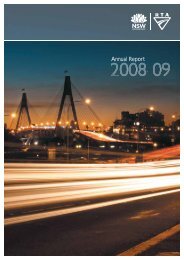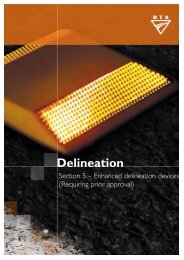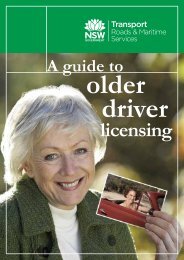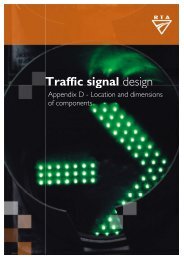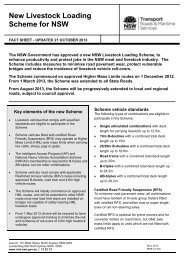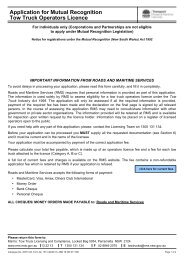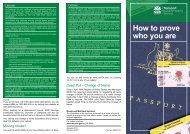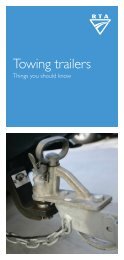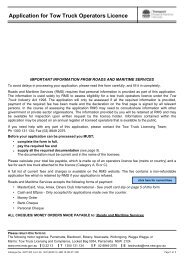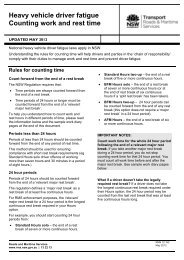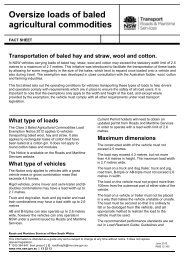Hazard perception handbook - RTA
Hazard perception handbook - RTA
Hazard perception handbook - RTA
You also want an ePaper? Increase the reach of your titles
YUMPU automatically turns print PDFs into web optimized ePapers that Google loves.
5<br />
46<br />
PRACTICE ExERCISES: SAfE GAPS WHEN TURNING RIGHT<br />
Selecting safe gaps when turning right is harder than turning left or crossing an<br />
intersection. The following practice exercises will help you with this. They will also<br />
help you develop hazard <strong>perception</strong> skills to apply to other gap selection tasks.<br />
Learning how to judge what a safe gap looks like in traffic needs practice. It can also<br />
be dangerous, so take care. Be careful and allow room for error as it can be very<br />
difficult to judge the approach speed of some vehicles.<br />
STEP 1<br />
find a T intersection on a busy arterial (main) road in a 60 km/h zone where many<br />
cars turn right onto the busy road. Park your car somewhere safe and walk to the<br />
intersection. Stand on the footpath where you can see the right turning vehicles and<br />
the approaching traffic on the busy road.<br />
Watch the traffic on the busy road approaching from the right and left. By counting<br />
‘one thousand and one, one thousand and two’ and so on, work out where a six<br />
second gap would start to the left. Select an object (eg a power pole, bus stop or<br />
tree) to mark this spot.<br />
do the same for traffic approaching from the right, but count to four seconds, not<br />
six.<br />
Now watch the drivers turning right from the side street onto the busy road – watch<br />
at least 10 to get a good feel for it. When do they go? do many go inside the safe<br />
gap guidelines?<br />
Think about when you would go if you were in your car waiting to turn right at that<br />
intersection. Would you have accepted or rejected the gaps taken by other drivers?<br />
STEP 2<br />
Using the same intersection, ask an experienced driver who you trust to make about<br />
six right hand turns with you in the passenger seat. The other driver should have a<br />
full licence and, if possible, at least five years licensed driving experience.<br />
Without interrupting or distracting the driver, note when you would have gone and<br />
discuss this with the driver later when you have stopped somewhere safe. How much<br />
did the two of you agree? Who accepted the smaller gaps, you or the more experienced<br />
driver? Were there any pedestrians?<br />
discuss with the more experienced driver why they went when they did and how<br />
they judged the gap was safe.<br />
<strong>Hazard</strong> <strong>perception</strong> <strong>handbook</strong>



